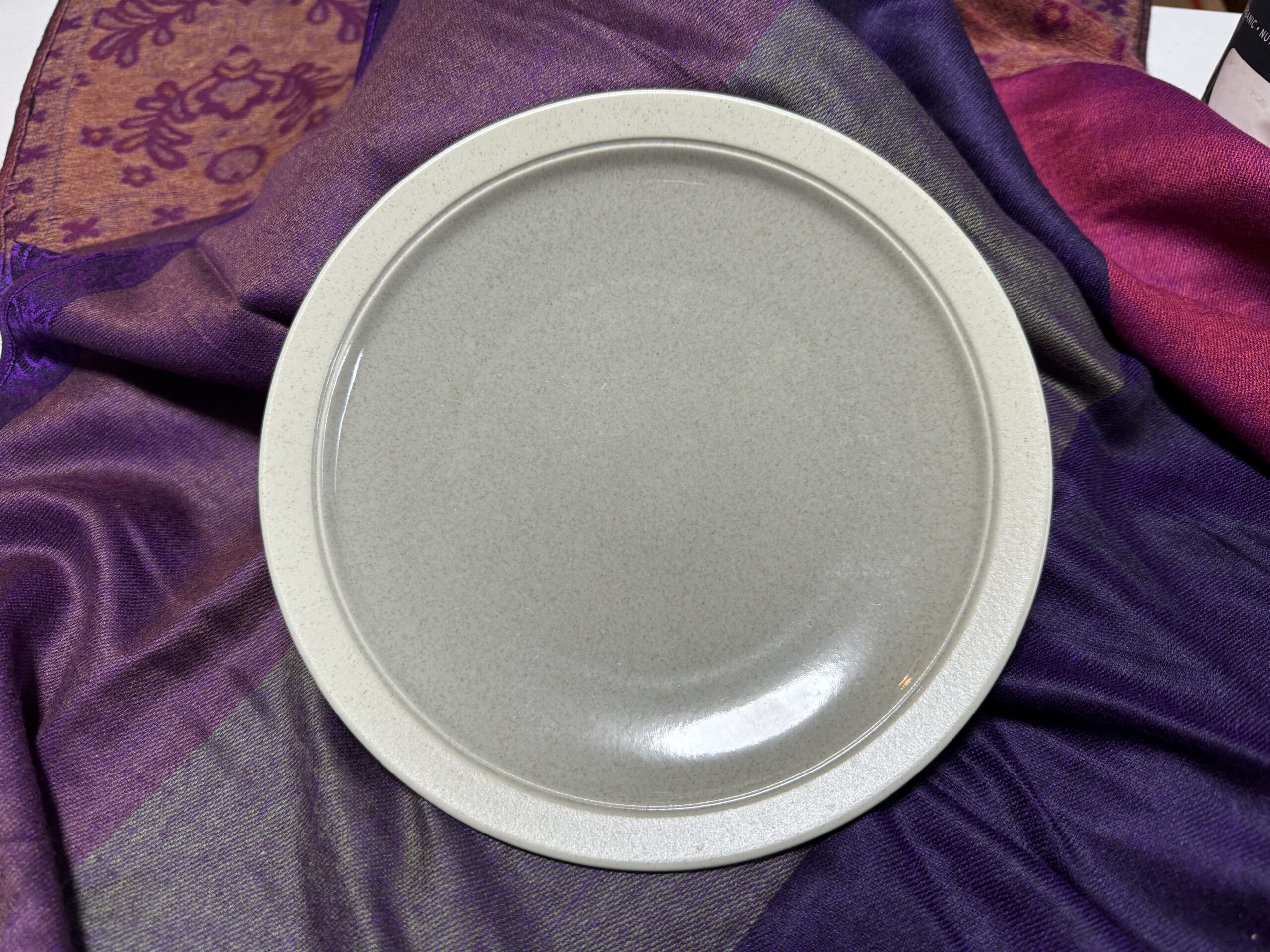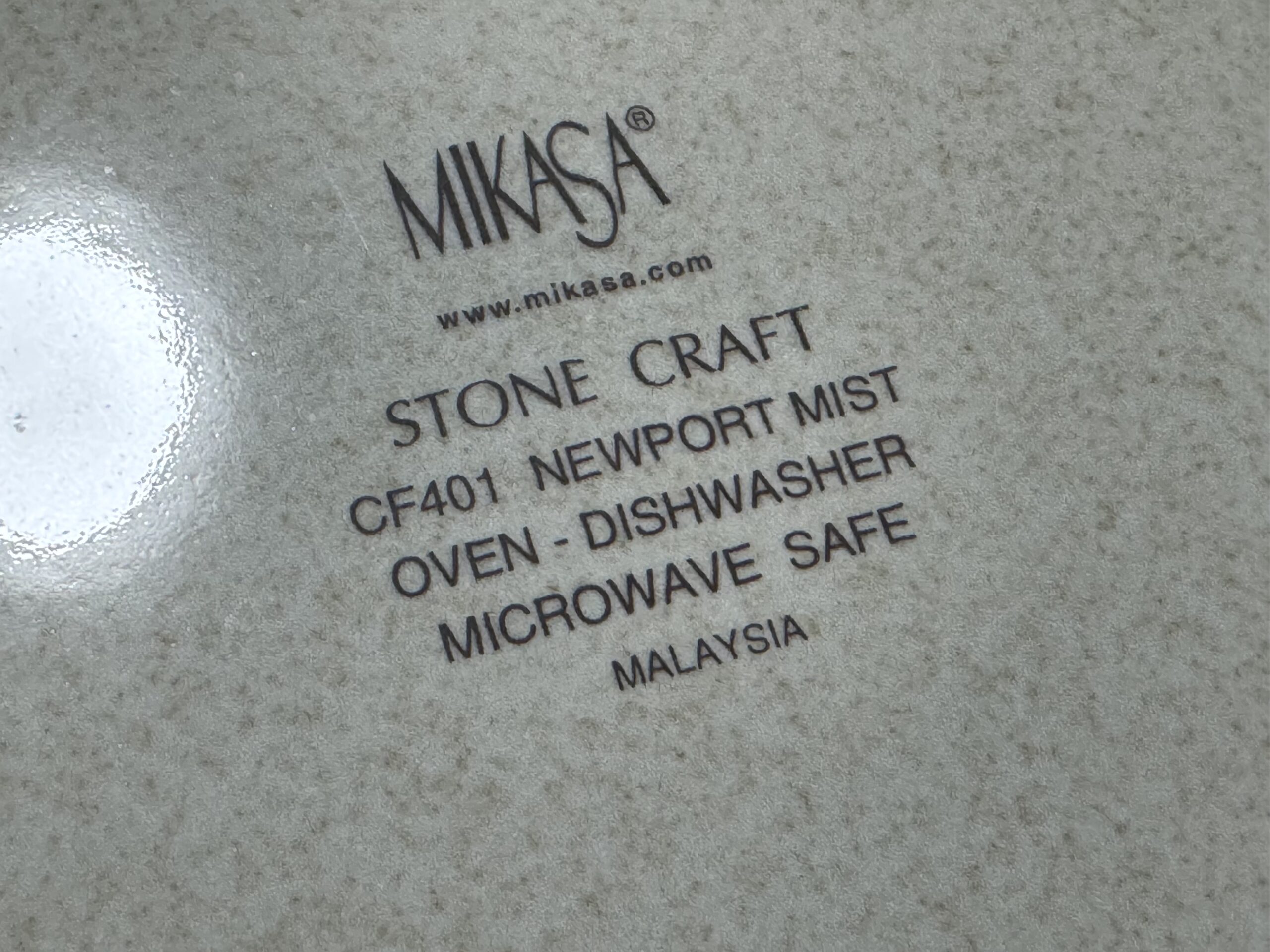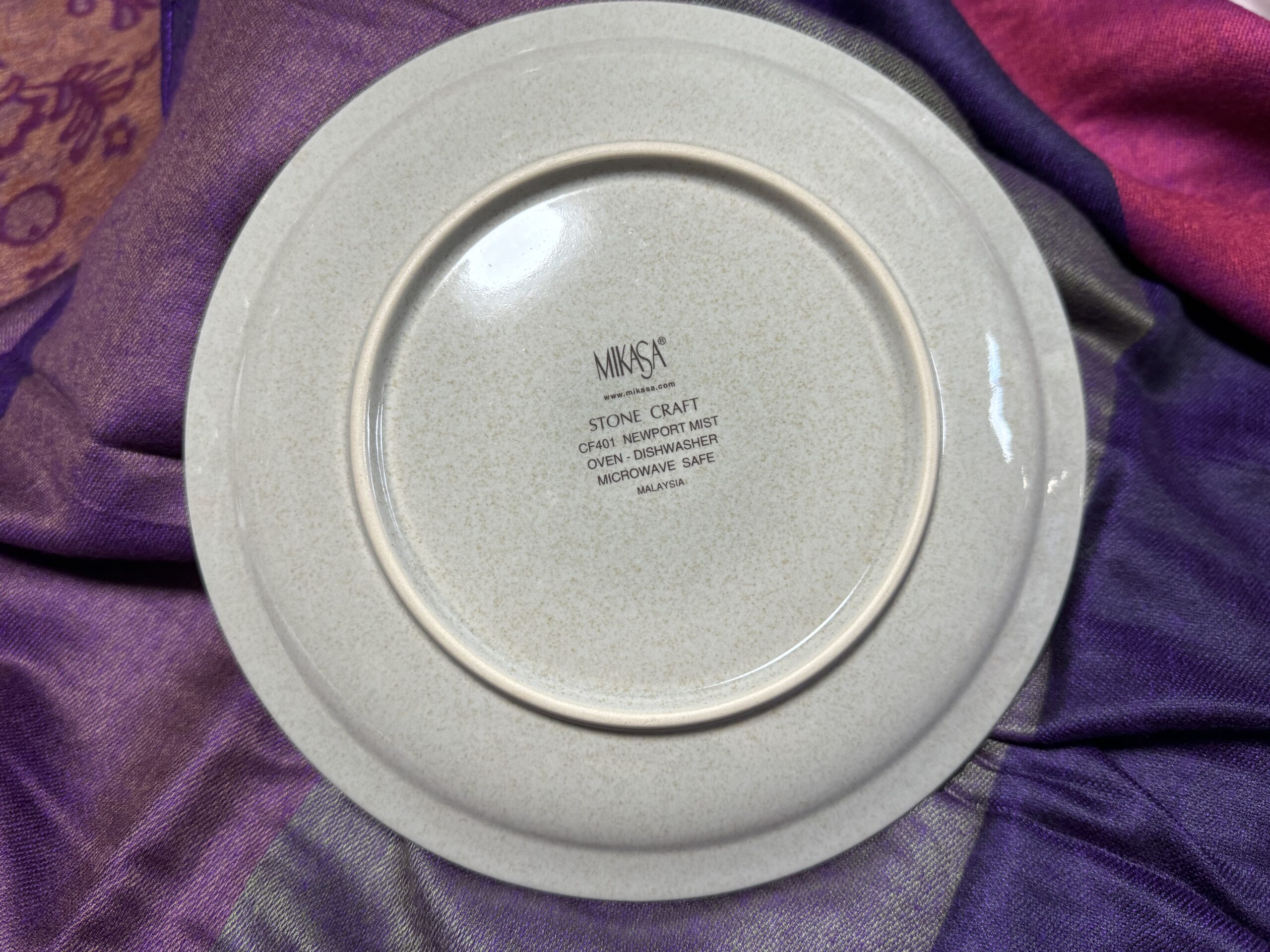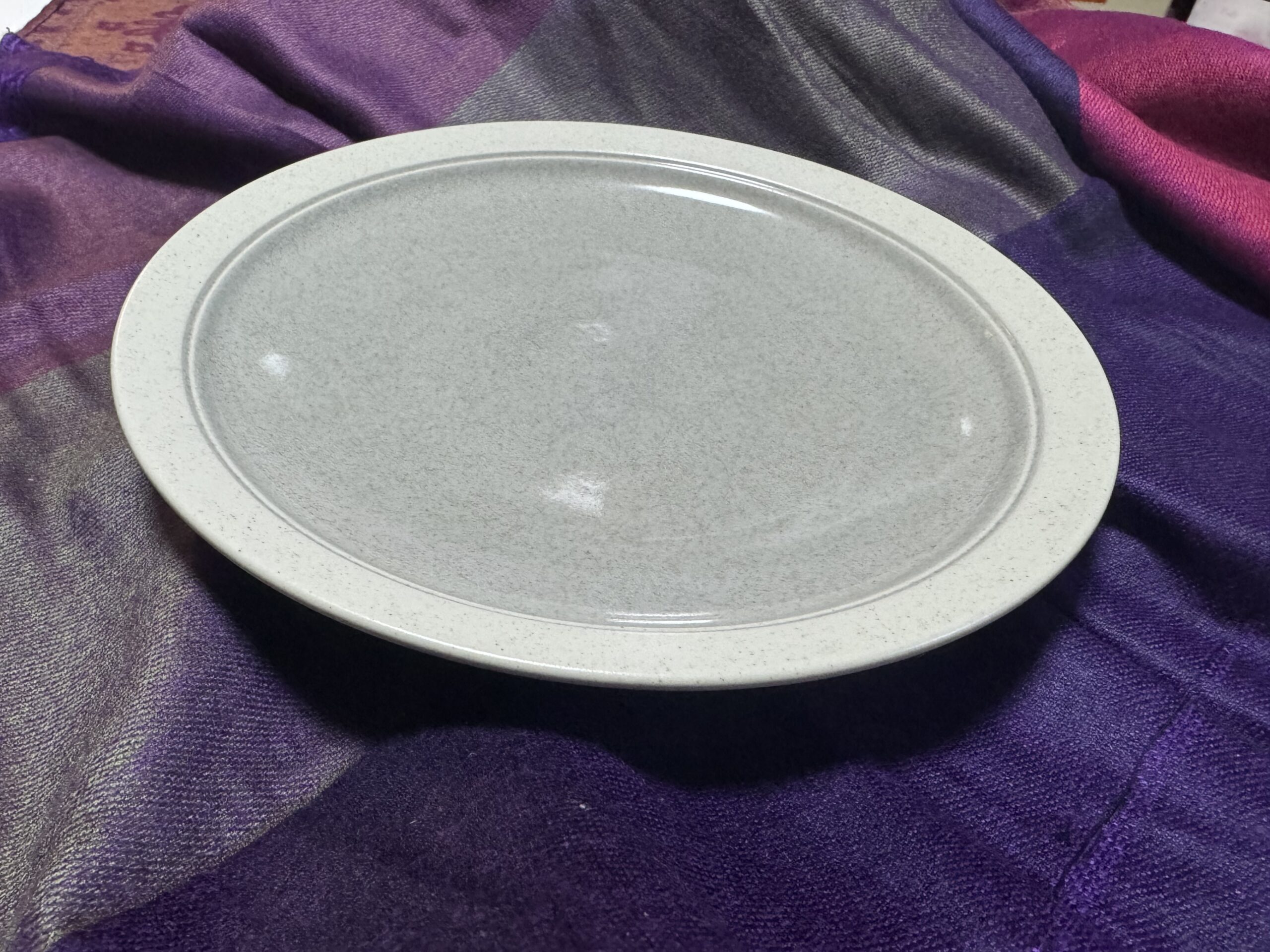XRF Test Results for Mikasa (Made in Malaysia) c. 2003 Stone Craft Newport Mist Pattern — CF401 — Ceramic Dish
For those new to the Lead Safe Mama website:
Tamara Rubin is a multiple-federal-award-winning independent advocate for childhood Lead poisoning prevention and consumer goods safety, and a documentary filmmaker. She is also a mother of Lead-poisoned children (two of her four sons were acutely Lead-poisoned in 2005).
- Tamara owns and runs Lead Safe Mama, LLC — a unique community collaborative woman-owned small business for childhood Lead poisoning prevention and consumer goods safety.
- Since 2009, Tamara has been conducting XRF testing (a scientific testing method) using the exact instrumentation employed by the U.S. Consumer Product Safety Commission to test consumer goods for toxicants (specifically heavy metals — including Lead, Cadmium, Mercury, Antimony, and Arsenic).
- Since July of 2022, the work of Lead Safe Mama, LLC has been responsible for five product recalls (FDA and CPSC).
- All test results reported on this website are science-based, accurate, and replicable.
- Items that Lead Safe Mama, LLC reports on are tested multiple times to confirm the results published (for each component tested).
- Recent notable press… There has been too much to mention already in 2024! Please check out our press page to see some of the amazing coverage of our work so far this year!
Metals highlighted below in RED are considered unsafe for humans in this application (dishware). Metals highlighted in BLUE are not considered unsafe for humans in this application (or at the levels detected in this item).
XRF test results for the Mikasa Stone Craft Newport Mist dish pictured,
purchased at Macy’s c. 2003/2004
Reading #1) Center of Food Surface on Dish
Dark Beige Speckled Glaze
60-Second Reading
- Lead (Pb): 151 +/- 17 ppm
- Cadmium (Cd): non-detect
- Arsenic (As): non-detect
- Mercury (Hg): non-detect
- Antimony (Sb): 64 +/- 13 ppm
- Iron (Fe): 1,866 +/- 142 ppm
- Cobalt (Co): 424 +/- 67 ppm
- Nickel (Ni): 1,253 +/- 80 ppm
- Copper (Cu): 203 +/- 31 ppm
- Zinc (Zn): 21,700 +/- 400 ppm
- Bromine (Br): 9 +/- 3 ppm
- Zirconium (Zr): 6,446 +/- 141 ppm
- Tin (Sn): 53 +/- 9 ppm
- Barium (Ba): 136 +/- 34 ppm
- Platinum (Pt): 322 +/- 72 ppm
- Bismuth (Bi): 62 +/- 16 ppm
- No other metals were detected in Consumer Goods Mode.
Reading #2) Food Surface of Dish
Light Beige Speckled Glaze Border of Food Surface
60-Second Reading
- Lead (Pb): 164 +/- 19 ppm
- Cadmium (Cd): 15 +/- 6 ppm
- Arsenic (As): non-detect
- Mercury (Hg): non-detect
- Antimony (Sb): 75 +/- 15 ppm
- Manganese (Mn): 531 +/- 178 ppm
- Iron (Fe): 2,436 +/- 184 ppm
- Cobalt (Co): 164 +/- 68 ppm
- Nickel (Ni): 498 +/- 71 ppm
- Copper (Cu): 213 +/- 36 ppm
- Zinc (Zn): 14,600 +/- 300 ppm
- Bromine (Br): 5 +/- 3 ppm
- Zirconium (Zr): 7,708 +/- 186 ppm
- Indium (In): 14 +/- 8 ppm
- Tin (Sn): 775 +/- 29 ppm
- Barium (Ba): 118 +/- 39 ppm
- Platinum (Pt): 188 +/- 68 ppm
- Bismuth (Bi): 117 +/- 18 ppm
- No other metals were detected in Consumer Goods Mode.
Reading #3) Back of Dish
Logo Area
60-Second Reading
- Lead (Pb): 142 +/- 18 ppm
- Cadmium (Cd): non-detect
- Arsenic (As): non-detect
- Mercury (Hg): non-detect
- Antimony (Sb): 54 +/- 15 ppm
- Chromium (Cr): 3,483 +/- 366 ppm
- Iron (Fe): 3,988 +/- 211 ppm
- Cobalt (Co): 467 +/- 82 ppm
- Nickel (Ni): 1,789 +/- 100 ppm
- Copper (Cu): 251 +/- 37 ppm
- Zinc (Zn): 23,900 +/- 500 ppm
- Zirconium (Zr): 8,575 +/- 203 ppm
- Tin (Sn): 39 +/- 10 ppm
- Barium (Ba): 131 +/- 38 ppm
- Platinum (Pt): 452 +/- 83 ppm
- Bismuth (Bi): 33 +/- 18 ppm
- No other metals were detected in Consumer Goods Mode.
How much Lead is “too much” Lead?
For context, the amount of Lead considered unsafe in an item intended for use by children is anything 90 ppm Lead or higher in the paint, glaze, or coating of an item and/or anything 100 ppm Lead or higher in the substrate. Unfortunately, (as discussed in many articles here on the Lead Safe Mama website) there is no law limiting total (XRF-detectable) Lead content in dishes or cookware (or really in any consumer goods not expressly “intended for use by children”). For a detailed discussion about the concern for Leaded glaze on new or vintage dishware, click here.
The Lead level in the glaze on this particular dish is fairly low (relative to many of the other examples we have shared recently — and especially relative to many other examples from Mikasa!). That fact — combined with the age of the dish (relatively newly manufactured and sold in the current century!) — means that this dish is likely non-leaching (plus, was likely tested for leaching and compliance with federal standards at the time of manufacture). However, it is impossible to know if it may (or may not) leach Lead from the food surface glaze at some point in the future (especially with daily use and wear with hot and/or acidic foods). It is for this reason we (Lead Safe Mama, LLC) recommend that dishes should be entirely free of Lead (however, this particular dish is not likely to result in the “Lead poisoning” of a user at this particular point in its lifecycle).
I share the above both for the owner of this dish (it was sent in for testing by Katie in Indiana) to help her make her decision about whether or not to use these with her family — and for others who have the same pattern and may be weighing various considerations given the Lead levels found. This article might be helpful in making the decision about using these dishes in the future.
Some additional reading that may be of interest:
- Can I test my own dishes myself at home?
- What can I test with a home test kit?
- Can I send you a dish to test?
- How to use this website to search for products you have in your home (a video)
- Safer (Lead-free) choices for dishes and other items in your home
As always, thank you for reading and sharing articles from LeadSafeMama.com. Please let me know if you have any questions and I will do my best to answer them personally as soon as I have a moment.
Tamara Rubin
Owner — Lead Safe Mama, LLC
#LeadSafeMama
Never Miss an Important Article Again!
Join our Email List












